Related Research Articles
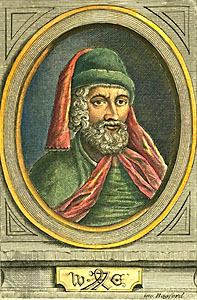
William Caxton was an English merchant, diplomat and writer. He is thought to be the first person to introduce a printing press into England in 1476, and as a printer to be the first English retailer of printed books.
This article is a list of the literary events and publications in the 15th century.

Wynkyn de Worde was a printer and publisher in London known for his work with William Caxton, and is recognised as the first to popularise the products of the printing press in England.
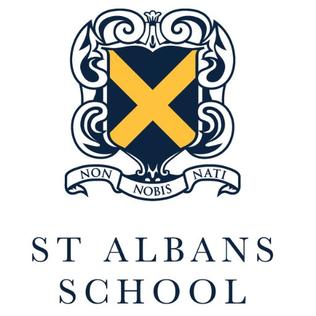
St Albans School is a public school in the city of St Albans in Hertfordshire. Entry before Sixth Form is for boys only, but the Sixth Form has been co-educational since 1991. Founded in 948 by Wulsin, St Albans School is not only the oldest school in Hertfordshire but also one of the oldest in the world. The school has been called "Britain's oldest public school" by the Daily Mail. Nicholas Carlisle, in 1818, described the school as "of very ancient origin, and of great celebrity" and the Good Schools Guide describes St Albans as a "traditional public school, with a rich history".

Richard Pynson was one of the first printers of English books. Born in Normandy, he moved to London, where he became one of the leading printers of the generation following William Caxton. His books were printed to a high standard of craftsmanship, and his Morton Missal (1500) is regarded as among the finest books printed in England in the period.
William of Wallingford was the 47th abbot of St Albans Abbey. He was a Benedictine monk at Holy Trinity Priory, Wallingford, Berkshire, England and like John of Wallingford and Richard of Wallingford, moved from this cell of St Albans Abbey to the abbey itself. He was a favourite of John Stoke, 44th abbot of St Albans, also from Wallingford. On his deathbed in 1451, Stoke was supposed to have given William and Thomas Wallingford, his senior chaplain, charge over 1000 marks but after his death they could only account for 250 marks. The abbot John Wheathampstead who succeeded Stoke suspected the two over the money. Nevertheless, William of Wallingford was later appointed abbot in 1476, after the death of William Albone, apparently for his financial acumen, at a time when the abbey was in debt. William of Wallingford managed to get rid of the debt whilst also spending on the abbey. He built the high altar known as the Wallingford Screen at a cost of £733 and completed the chapter house. The statues on it were destroyed during the Dissolution but were replaced in Victorian times.
The decade of the 1480s in art involved some significant events.
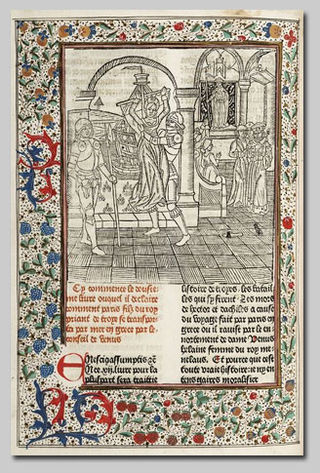
Colard Mansion was a 15th-century Flemish scribe and printer who worked together with William Caxton. He is known as the first printer of a book with copper engravings, and as the printer of the first books in English and French.
Events from the 1470s in England.
Events from the 1480s in England. This decade marks the beginning of the Tudor period.
Theoderic Rood was a printer of incunabula at Oxford, England. His activities in the city can be dated with any certainty only to the years 1481 and 1482, but probably extend between around 1481 and 1484. Several earlier printed books, dating from 1478 and 1479, and an edition of John Mirk's Liber festivalis of 1486 or 1487, which were once attributed to Rood's press are now thought to be the work of other, as yet unidentified, printers.
Edward Gordon Duff, known as Gordon Duff, was a British bibliographer and librarian known for his works on early English printing.

Guido de Monte Rochen or Guy de Montrocher was a French priest and jurist who was active around 1331. He is best known as the author of Manipulus curatorum, a handbook for parish priests, that was often copied, with some 180 complete or partial manuscripts surviving, and later reprinted throughout Europe in the next 200 years, with at least 119 printings, and sales which have been estimated to be three times those of Thomas Aquinas' Summa Theologica. It became obsolete only when the Council of Trent created the Roman Catechism in 1566.
The Lucidarius, an anonymous medieval book, was the first German language summa, written circa 1190–1195. It was based on different sources, the chief one being the Elucidarium and other texts by Honorius Augustodunensis. Other sources include De philosophia mundi by William of Conches and De divinis officiis by Rupert of Deutz. It has been preserved in 66 partial or complete manuscripts, and 85 printings in German. It is claimed to be the first original German language work in prose.
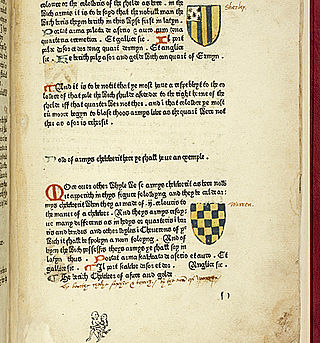
The Book of Saint Albans, originally Boke of Seynt Albans, is the common title of a book printed in 1486 that is a compilation of matters relating to the interests of the time of a gentleman. It was the last of eight books printed by the St Albans Press in England. It is also known by titles that are more accurate, such as The Book of Hawking, Hunting, and Blasing of Arms. The printer is sometimes called the Schoolmaster Printer. This edition credits the book, or at least the part on hunting, to Juliana Berners as there is an attribution at the end of the 1486 edition reading: "Explicit Dam Julyans Barnes in her boke of huntyng".
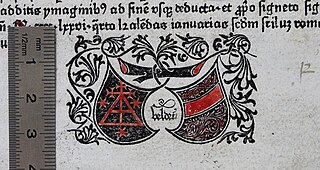
Johann Veldener, also known as Jan Veldener or Johan Veldenaer; was an early printer in Flanders. He worked as a punchcutter and printer in Cologne, together with William Caxton, who may have financed his first books. They both left for Flanders in 1472. Evidence indicates that Veldener assisted Caxton in setting up his printing office in Bruges and helped printing his first work there, the 1472-1473 Recuyell of the Historyes of Troye by Raoul Lefèvre. Afterwards, Veldener went to Leuven and set up his printing company there, becoming the second printer in Leuven after John of Westphalia, and the third or fourth in the Netherlands. He entered the Leuven University on 30 July 1473 in the faculty of Medicine.
John Lettou or John of Lithuania was an English bookbinder and printer, presumably Lithuanian from the Grand Duchy of Lithuania.

Thomas Berthelet was a London printer, probably from France. His surname was also variously spelt Berthelot and Berthelett. Berthelet was to become King's Printer and King's Bookbinder for Henry VIII. His name was Englished as "Bartlett".
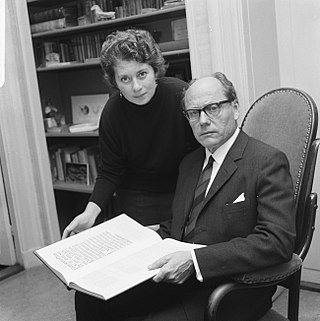
Lotte Hellinga, FBA is a book historian and expert in early printing. She is an authority on the work of William Caxton.

The Epitome margaritae eloquentiae in Leeds Special Collections is the only surviving copy of a book on rhetoric written in Latin by Lorenzo Guglielmo Traversagni (c.1425-1503). The author also appears in catalogues as under the pen names Laurentius Gulielmus Traversanus and Guillermus Saphoensis the name used in this work.
References
- ↑ "A bibliography of printing : with notes and illustrations : Bigmore, E. C. (Edward Clements), 1838?-1899". Archive.org. Retrieved 26 January 2017.
- ↑ Debbie White (18 January 2017). "St Albans School solves 'mystery' of whereabouts of lost centuries-old Latin book - Education - Herts Advertiser". Hertsad.co.uk. Retrieved 26 January 2017.
- ↑ Henry Thomas Riley, editor, Chronica Monasterii S. Albani, Registra Quorundam Abbatam Monasterii S. Albani, Qui Saeculo XVmo Floruere, Volume 2, Longman & Co. London, 1873, page 314
- ↑ Nicholas Orme, Medieval Schools, From Roman Britain to Renaissance England, Yale University Press, New Haven, 2006, page 153
- ↑ Charles Ashdown (1908). "The Schoolmaster Printer of St Albans" (PDF). Stalbanshistory.org. Retrieved 26 January 2017.
- ↑ Lotte Hellinga, “William Caxton and early printing in England”, The British Library (2010), Chapter 11, The Press at St Albans (1479-81, 1486), pages 90-99
- ↑ Journal of the Printing Historical Society, New Series, No. 24, Summer 2016, “Printers, stationers and bookbinders in the plea rolls of the Court of Common Pleas, 1460-1540”, by Vance Mead, pages 31-32
- ↑ "Feoffment".
- ↑ Journal of the Printing Historical Society, New Series, No. 24, Summer 2016, “Printers, stationers and bookbinders in the plea rolls of the Court of Common Pleas, 1460-1540”, by Vance Mead, p 16
- ↑ "British Library - Incunabula Short Title Catalogue". Istc.bl.uk. 27 October 2005. Retrieved 26 January 2017.
- ↑ Peter G. Bietenholz; Thomas Brian Deutscher (2003). Contemporaries of Erasmus: A Biographical Register of the Renaissance and Reformation. University of Toronto Press. p. 378. ISBN 978-0-8020-8577-1 . Retrieved 19 April 2012.
- ↑ Université catholique de Louvain (1835-1969) (1995). Humanistica Lovaniensia. Leuven University Press. p. 146. ISBN 978-90-6186-680-0 . Retrieved 19 April 2012.
{{cite book}}: CS1 maint: numeric names: authors list (link) - ↑ "British Library - Incunabula Short Title Catalogue". Istc.bl.uk. 27 October 2005. Retrieved 26 January 2017.
- ↑ "Archived copy". istc.bl.uk. Archived from the original on 26 July 2012. Retrieved 3 February 2022.
{{cite web}}: CS1 maint: archived copy as title (link) - ↑ Edward Grant (29 May 1981). Much Ado About Nothing: Theories of Space and Vacuum from the Middle Ages to the Scientific Revolution. Cambridge University Press. p. 291 note 78. ISBN 978-0-521-22983-8 . Retrieved 19 April 2012.
- ↑ Jacques (de Vitry) (1890). The Exempla Or Illustrative Stories from the Sermones Vulgares of Jacques de Vitry. Ayer Publishing. p. xcviii. ISBN 978-0-8337-0715-4 . Retrieved 19 April 2012.
- ↑ "Chronicles of England". Special.lib.gla.ac.uk. Retrieved 26 January 2017.
- ↑ George D. Painter, William Caxton (1976), p. 188.
- ↑ "John Insomuch Schoolmaster Printer (1479) Limited". Cdrex.com. 21 January 2015. Retrieved 26 January 2017.